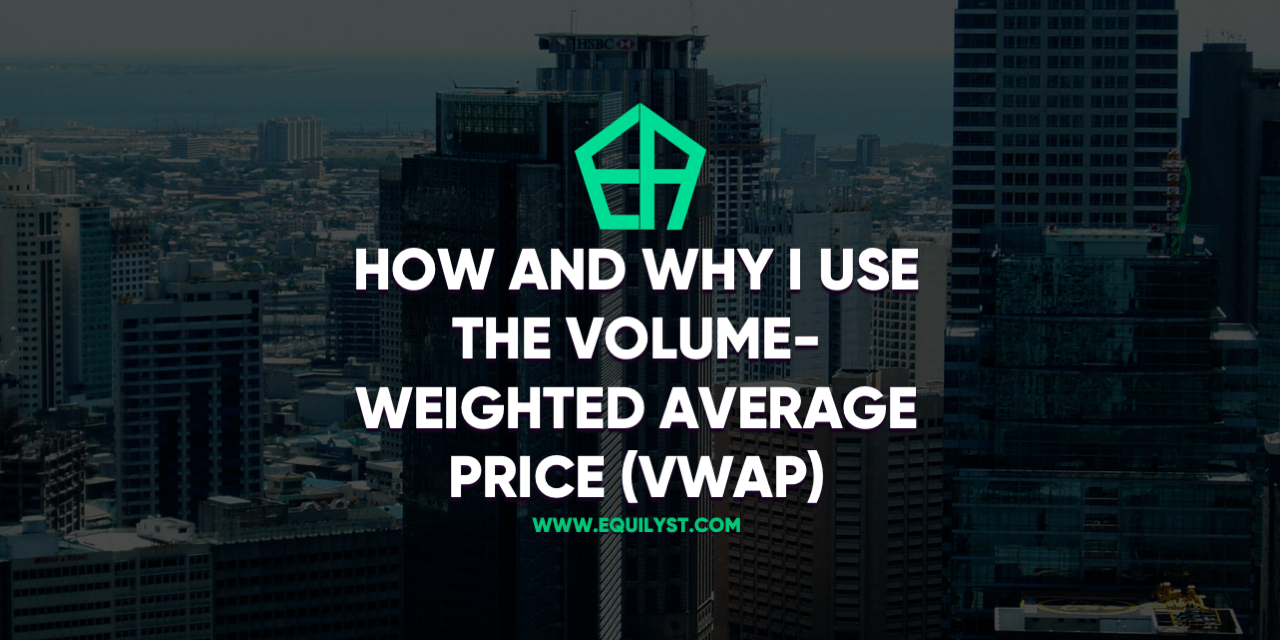What Is the Volume-Weighted Average Price?
The volume-weighted average price or VWAP is one of the indicators that form my Evergreen Strategy (my proprietary methodology) when investing in the Philippine stock market. You often see this in my articles where I mention the Dominant Range Index of a stock. If you haven’t attended my online one-on-one masterclass, I’m sure you don’t know the reason yet why it’s part of my strategy. That’s the reason why I wrote this article.
Imagine you go to a supermarket and want to buy several items on your shopping list. Each item has a different price. Now, instead of just looking at the price tag of each item, you also consider how much of each item people are buying throughout the day.
In the context of stocks, the volume-weighted average price works in a similar way. It’s like finding the average price of a stock, but it takes into account the trading volume (the number of shares bought and sold) at each price level throughout the day.
Here’s the breakdown:
- Price Tag: Think of the stock price at different times during the day as the price tags on the items in the supermarket.
- Shopping List: Your shopping list represents the different times of the day when the stock was traded.
- People Buying Items: In the supermarket analogy, this is like the trading volume in the stock market. More people buying a particular item could indicate high demand.
So, the volume-weighted average price is like finding the average amount you would pay for all the items on your shopping list, considering not just their prices, but also how popular each item was throughout the day.
Here’s my formula: VWAP = Total Traded Value / Total Volume
In the stock market, if the current price of a stock is above its VWAP, it means, on average, the stock has been traded at a higher price throughout the day, considering the trading volume. If it’s below VWAP, it means, on average, the stock has been traded at a lower price throughout the day, again considering the trading volume.
Understanding volume-weighted average price helps traders and investors gauge whether the current price of a stock is relatively high or low compared to the average price, considering how many shares were traded at those prices. It provides a more nuanced view of the stock’s value, similar to how considering both prices and popularity gives you a better understanding of the cost of your shopping items.
Advantages and Disadvantages if the Last Price Is Higher Than the VWAP
When the last price of a stock moves above its volume-weighted average price (VWAP), it can have several implications for traders and investors. Here are the advantages and disadvantages of this scenario:
Advantages:
- Bullish Signal: Generally, when the last price is above VWAP, it indicates a bullish trend in the stock. Traders often see this as a positive sign, suggesting that the stock is strong and likely to continue its upward movement.
- Market Confidence: The stock trading above VWAP may signal market confidence in the company. Investors and traders are more likely to be optimistic about the stock’s future prospects, which can attract more buyers.
- Supportive Momentum: When the last price is consistently above VWAP, it suggests a supportive momentum. Traders may use this information to make informed decisions about entering or holding a long position, expecting the momentum to continue.
- Confirmation of Uptrend: If the stock consistently trades above VWAP over a specific period, it can confirm the presence of a sustained uptrend, providing reassurance to investors and potentially attracting more institutional interest.
Disadvantages:
- Overvaluation Risk: A stock trading above its VWAP might be overvalued, especially if the deviation is significant. This could mean that the market price does not align with the stock’s fundamental value, potentially leading to a market correction.
- Potential Reversal: In some cases, a stock trading above VWAP might indicate overbought conditions. If the price moves significantly above VWAP, it could signal a potential reversal, with the stock being vulnerable to a pullback or correction.
- Lack of Sustainability: A short-term deviation above VWAP might not indicate a sustainable trend. If the stock quickly retreats below VWAP, it suggests that the bullish momentum was short-lived and may not be a reliable indicator for long-term investment decisions.
- Volume Consideration: It’s essential to consider the trading volume alongside VWAP. If the stock is trading above VWAP on low volume, it might lack the necessary market breadth to sustain the upward movement, making the bullish signal less reliable.
- Whipsaw Effect: Rapid movements above and below VWAP within a short time frame can lead to whipsaw effects, where traders are repeatedly triggered in and out of positions. This can result in losses due to increased trading costs and decreased profitability.
While a stock trading above its volume-weighted average price can provide useful insights, I still consider other factors such as the position of the last price relative to a specific moving average and the ratings of my proprietary Dominant Range Index and Market Sentiment Index to make well-informed decisions. Using volume-weighted average price in conjunction with my proprietary indicators can enhance its effectiveness in predicting price movements. To learn the specific role of the VWAP in my proprietary methodology, consider enrolling to my online one-on-one masterclass.
- MA, BDO, ALI, URC, PX: Is Their Dominant Range Pointing to a Breakout? - March 14, 2025
- Tracking Market Sentiment: MTD Ratings for 30 Bluechip Stocks (March 2025) - March 13, 2025
- PSEi Stalls Below 6,260 as Market Awaits Political Shift - March 12, 2025







